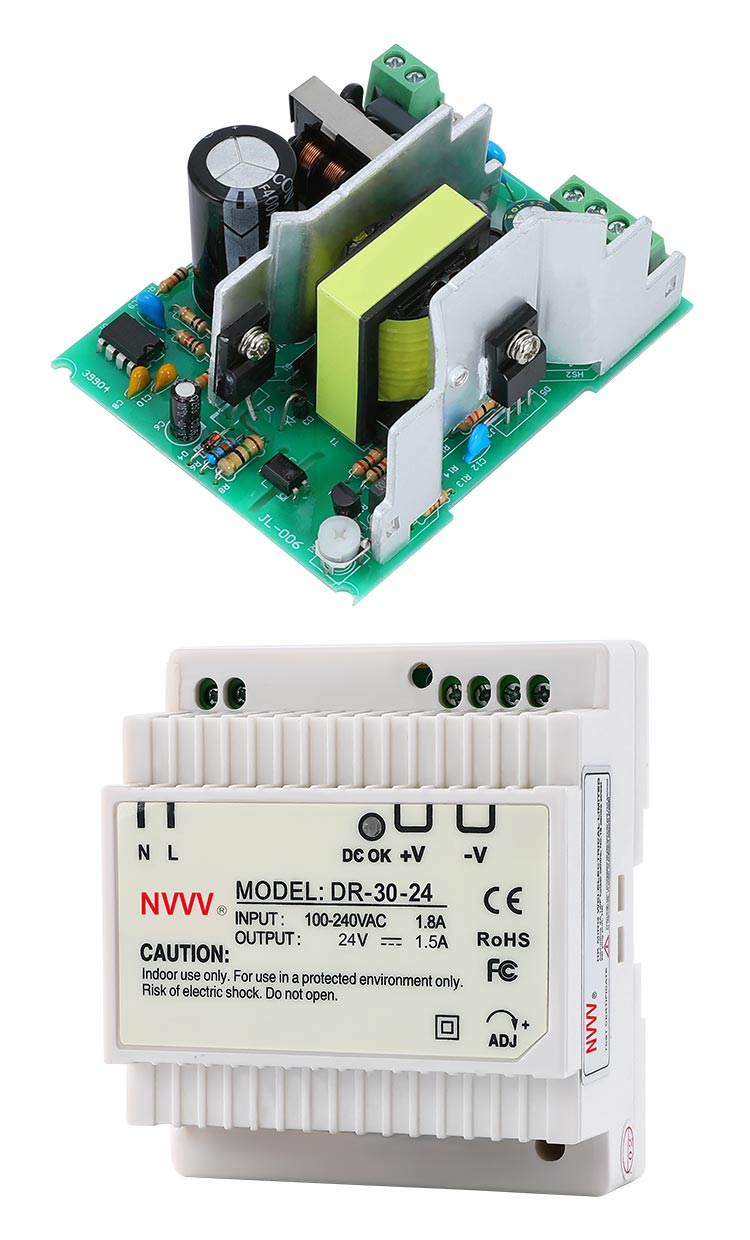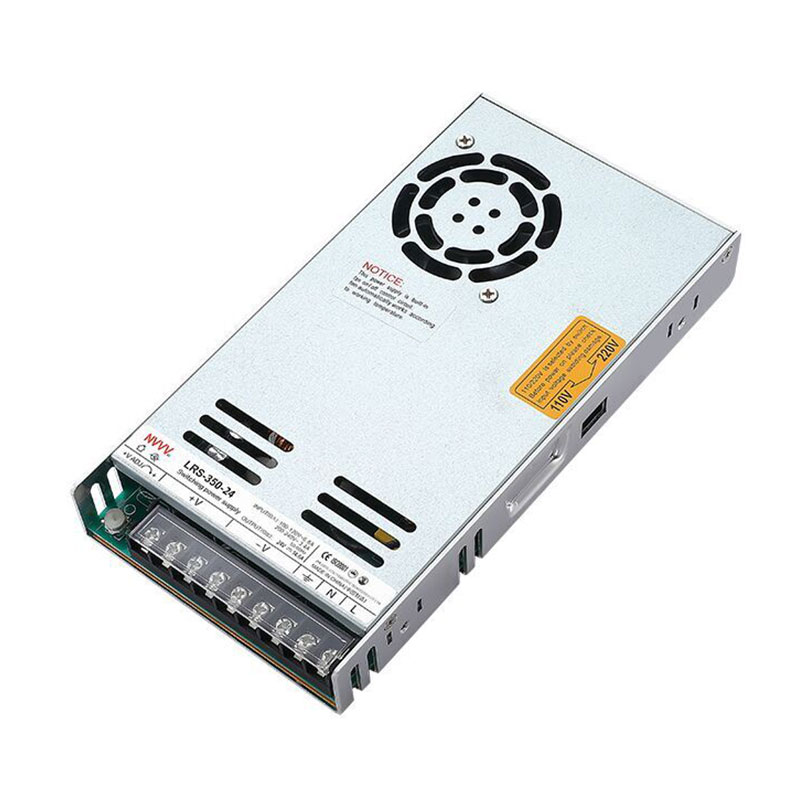Can SMPS work with DC input?
With the continuous development of power conversion technology, switching power supply (SMPS, Switch Mode Power Supply) has become an indispensable part of modern power electronic equipment. Its main function is to convert the input power into the required output voltage, and it is widely used in home appliances, industrial equipment, communication equipment and other fields. In most cases, SMPS is used to convert alternating current (AC) into direct current (DC) to provide stable DC power for the equipment. But in some application scenarios, the input power may be DC instead of AC. At this time, the question is: Can SMPS work normally under DC input? In this article, we will discuss in detail from the basic principles of SMPS, the feasibility of DC input and practical application scenarios.
1. How does SMPS work?
To understand whether SMPS can work under DC input, we must first understand its basic working principle. The main function of SMPS is to convert unstable input power into stable DC output through high-frequency switching technology.
Rectification and filtering
Traditional switching mode power supply design is mainly used for AC input. Its first step is to convert alternating current (AC) into pulsating direct current (DC) through a rectifier. The process usually uses a bridge rectifier to rectify the positive and negative waveforms of AC power into DC power, and then passes through a filter (usually a capacitor) to remove the ripples in the voltage, making it a relatively smooth DC power.
In this process, the rectifier bridge is one of the indispensable components of SMPS. However, when the input power is DC power, the rectification step may be skipped or become unnecessary.
Switching Regulation
Once the power supply is rectified into DC power, the SMPS begins to cut and regulate the DC power using high-frequency switching elements (such as MOSFETs). Through high-speed switching operations, the SMPS can control the output voltage according to the needs of the load. This process is usually achieved through pulse width modulation (PWM), and the width of the PWM control determines the size of the output voltage.
Even in the case of DC input, the switching regulation part can still work normally. The DC input directly enters the high-frequency conversion circuit of the SMPS, and the voltage can still be regulated by adjusting the pulse width.
Feedback Control
The feedback control system in the SMPS is used to monitor the stability of the output voltage and ensure that the output voltage remains constant under different load conditions. Whether the input voltage changes or the load power fluctuates, the feedback control circuit will adjust the switching frequency and duty cycle in real time to keep the output voltage within the target value range. The feedback control system usually contains an error amplifier and a reference voltage source to continuously compare the difference between the actual output voltage and the expected value, and adjust the on and off time of the switching transistor accordingly.
In the case of DC input, although there is no AC rectification process, the feedback control can still work normally. Because whether it is AC or DC input, the core function of SMPS is to provide a stable output voltage through switch regulation and feedback control. Therefore, in theory, DC input will not affect the normal operation of this part.
2. Can SMPS work normally under DC input?
The answer is yes, but the specific situation depends on the design and application scenario of SMPS. In many cases, SMPS can directly accept DC input and work normally, but there are exceptions. The following is a detailed analysis of several possible situations.
How does DC input affect the rectification circuit?
The first step of SMPS is rectification, which converts AC to DC. However, if the input power itself is DC, then the rectification part is no longer necessary. Therefore, if a bypass path is designed in the SMPS to handle DC input, the rectifier bridge part will not work and DC power will directly enter the subsequent circuit. If the design of the rectifier bridge fails to take DC input into account, the input DC power may generate unnecessary voltage drop when entering the rectifier circuit or cause circuit damage.
Some modern SMPS have AC/DC dual input functions, which can automatically identify the input power type and select the corresponding circuit path according to the actual situation. This type of SMPS can seamlessly support DC input without additional adjustments or modifications.
Impact of input voltage range
Generally speaking, the input voltage range is considered when designing SMPS. For example, some SMPS support AC input from 90V to 240V, which is to adapt to the voltage standards of different countries around the world. However, if the SMPS is designed only for AC input, input DC power may cause input voltage range problems. For example, a 12V or 24V DC input may be far below the minimum input voltage requirement of the device, resulting in failure to work properly.
In addition, some SMPS devices support high voltage DC input (HVDC), such as 380V DC input, which is suitable for specific industrial or communication equipment. Therefore, when using DC input, it is necessary to ensure that the input voltage is within the specified range of the SMPS to avoid insufficient or excessive voltage.
Adaptability of switching and regulating circuits
The switching circuit and regulating circuit of the SMPS are independent of the type of input power (AC or DC), and mainly rely on the control ability of high-frequency switching. Therefore, even in the case of DC input, the SMPS can still adjust the output voltage by controlling the switching frequency and pulse width. Whether it is DC input or AC input, the working mode of this part will not change fundamentally.
However, it is worth noting that not all SMPS can automatically adapt to DC input. Some SMPS with simpler designs are only designed for AC power supply, and using DC input may cause overload of the switching circuit or filter circuit. Therefore, when selecting an SMPS, users must carefully check the product specifications to confirm whether it supports DC input.
3. What application scenarios are suitable for SMPS with DC input?
Although most SMPS are designed for AC input, in many specific application scenarios, using SMPS with DC input is not only possible, but also a better choice. These scenarios often require a stable DC power supply, or more efficiently power the device with DC power.
Solar and off-grid power systems
In solar power generation systems, the electricity generated by photovoltaic panels is direct current. In order to power household appliances or industrial equipment, solar systems usually need to convert direct current into alternating current for use. However, if the load device can directly use the SMPS with direct current input, then this conversion step can be omitted, greatly improving the efficiency of power utilization.
Take the SMPS with 24V DC input as an example, it can directly obtain power from the solar panel to power the device. This not only reduces unnecessary energy conversion losses, but also reduces the complexity and cost of the system. In addition, many off-grid power systems also rely on battery energy storage, which also stores direct current. Therefore, in off-grid systems, using a SMPS with DC input can maximize energy utilization.
Industrial Automation and Electric Vehicles
In industrial automation, many devices rely on DC power. Especially in some electric vehicles and power tools, the battery pack is usually in the form of direct current. In this case, using a switch mode power supply with DC input can effectively convert the DC voltage of the battery to other voltages required by the device without converting the power to alternating current and then back to direct current.
Taking electric vehicles as an example, the battery pack inside them usually outputs 24V or 48V DC power. Through SMPS, the required low-voltage DC power can be provided to on-board electronic devices such as lighting systems, communication equipment or entertainment equipment without going through the traditional AC conversion system. This method not only reduces power loss, but also improves the overall efficiency of the electric vehicle system.
Communication equipment and server power supply
In data centers or communication base stations, efficient power management is crucial. Many large communication equipment and servers rely directly on DC power rather than AC power. Using SMPS that supports DC input can avoid multiple AC-DC conversions and reduce energy loss.
Some data centers use high-voltage direct current (HVDC) to power servers and switches. This design can greatly reduce the loss during power transmission and reduce the number and complexity of power conversion equipment.
Portable devices and backup power supplies
For some portable electronic devices or emergency backup power supplies, DC power is more common. For example, portable generators, mobile power supplies or emergency battery packs usually provide DC power. If these devices use SMPS with DC input, they can more flexibly convert battery power to the voltage required by the device while ensuring that the device can operate stably in an emergency.
4. What factors should be considered when selecting a DC input SMPS?
When selecting a DC input SMPS, you need to consider several key factors to ensure that it matches the usage scenario and device requirements.
Input voltage range
Make sure that the input voltage range supported by the switched mode power supply matches the actual DC power supply used. For example, many DC input SMPS support 12V, 24V, or 48V power input. If your power supply voltage is outside this range, it may cause the device to not work properly or be damaged.
Output power requirements
The output power of the SMPS must meet the power requirements of the load device. If the load device requires higher power and the output power of the SMPS is insufficient, it may cause the device to not work properly or even damage the device. When selecting an SMPS, you need to fully consider the power consumption of the device and ensure that the SMPS can provide sufficient power output.
Device compatibility and safety
Not all SMPS can automatically adapt to DC input, especially devices designed for AC input only. Therefore, when selecting an SMPS, be sure to confirm whether it is clearly marked as supporting DC input. If the device does not clearly support DC input, forcing DC power may cause circuit overload or component damage.
Some NVVV brand SMPS support AC/DC dual input and have built-in perfect protection circuits, which can be compatible with more application scenarios and are ideal for users when choosing DC input power supplies.
Conclusion
SMPS can use DC input in many application scenarios, especially in solar systems, industrial equipment, communication equipment and backup power supplies. Although traditional SMPS designs are mainly used for AC input, SMPS that support DC input have also become part of the market by adjusting the circuit design. When choosing a DC input SMPS, users need to ensure that factors such as voltage range, power requirements and device compatibility are met to ensure that the equipment can operate stably for a long time.
Through correct configuration and selection, DC input SMPS can greatly improve system efficiency and reduce losses during power conversion. As technology continues to develop, more SMPS that support AC/DC dual input will emerge, providing users with more flexibility and choices.












